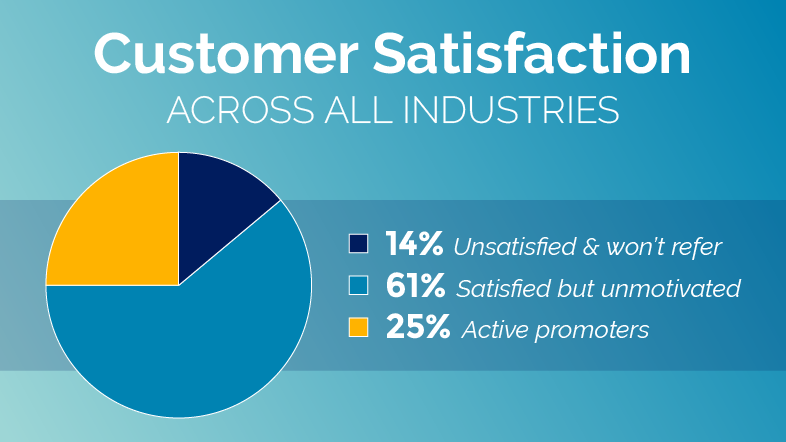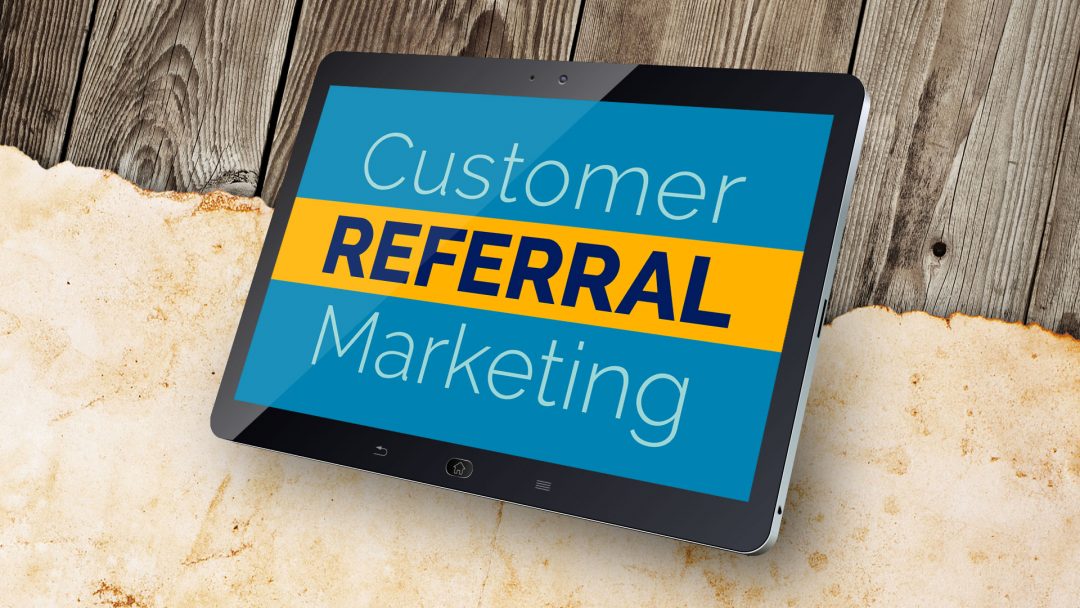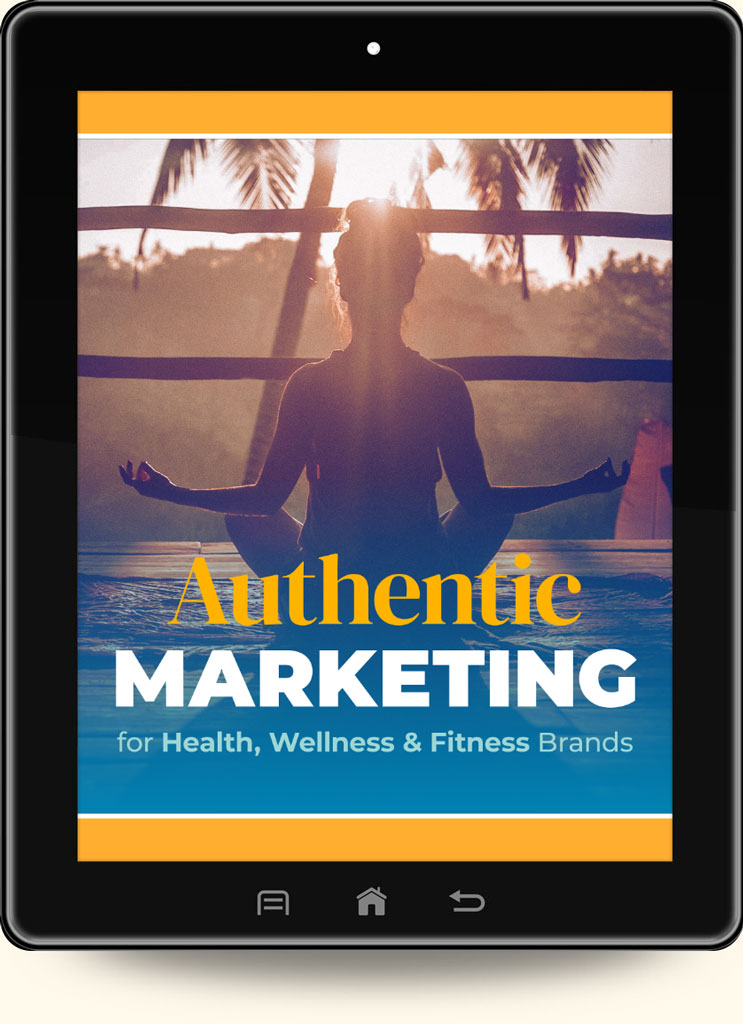If you run a service business, you’re well aware that word-of-mouth referrals are your main source of new business. So why not craft a simple customer referral marketing strategy?
Before we get into tactical ideas, let’s be clear about what a referral actually is. A referral is a bridge of trust among parties who don’t know each other well. For now, let’s forget about business contacts, leads, networking, prospects, introductions, affiliates and the like. Referrals are all about the personal transfer of trust among individuals.
When a referral works well, it’s a win-win-win situation:
- Your customer helps their friends succeed
- Their friends receive a valuable connection
- You get new business without sales and marketing costs
Customer referrals = everybody wins. Now let’s dig in:
1. Be proactive and ask for referrals
Because referrals are so common, it’s easy to take them for granted. Here’s the typical expectation:
- You provide value
- People are satisfied
- They tell their friends that you’re awesome
- Their friends do business with you
Well, yes… kinda.
Some happy customers will tell their friends (but most won’t). And it’s not a reflection on you, it’s just human nature. People don’t go around promoting everyone they do business with. When people spend money, they expect satisfaction. That’s usually the end of it.
If you want to maximize referrals, you have to ask for them. It’s less about you being awesome and more about being brave and savvy enough to ask. Depending on the stats you find, over 80% of satisfied customers are willing to refer your business. But sadly, less than 30% actually do.
Over 80% of satisfied customers are willing to make a #referral. Share on XDon’t be afraid to ask
Most of the time, you’re just not asking. That’s because it’s uncomfortable to ask for referrals, maybe even a little presumptuous. Professional service providers and business owners don’t like to set themselves up for rejection.
Asking can be awkward. Plus some people don’t want to help. Let’s not forget that some “help” isn’t helpful at all.
A tiny fraction of your customers will take a referral request the wrong way. Expect that some customers will think you want unwarranted access to their network. And to be clear, that’s not the case at all. You’re not looking for networking connections or introductions. You’re asking your satisfied customers to recommend you.
Also, some of your customers will definitely try to help. They might even give you their friends’ contact information or send out email introductions. But these well-meaning activities are not referrals.
Introductions, leads, and contacts are great and shouldn’t be overlooked. But they aren’t exactly what you’re looking for.
Be specific about recommendations
A customer referral is a pre-qualified prospect who will likely buy from you—because they trust their friend’s opinion. If you have to endure a lengthy sales process or follow up several times, it’s not much of a referral. Once again, a referral is a bridge of trust between your customer and their contact. It’s a vote of confidence.
Your wording and the way you ask for referrals will prevent some awkwardness, misfires, and wasted time. Here’s a good, simple way to ask for a referral: Would you be willing to recommend me to someone you like?
You’d be surprised how well clarity and simplicity work for referrals.
Why referral marketing works
When your customers recommend you, it’s because they’re satisfied and they trust you. If they like the people they’re referring, they probably trust them too. It’s a double-whammy of trust that cuts through the clutter.
2. Make it easy to refer your business
Asking for referrals is a no-brainer referral marketing strategy. And I can’t think of an easier way than to add it to your email signature. Why not replace that blog link, inspirational quote, or bland slogan with something useful?
Email is personal because it’s your signature. So keep the wording personal: Like my work? Please recommend me to a friend. It’s easy and doesn’t require any awkwardness. You’d be surprised by how much website traffic you get from your email signature. This works best if you can create a simple referral page on your website.
When you create a referral page, it’s a clear indicator that you’re primed for referrals. The simple act of writing the content and launching the page is invaluable. If you’re like me, you’ll be hard pressed to publish it without developing some form of basic incentive program.
Make referral incentives clear
Referrals are win-win-win situations. But because they involve three parties, they can get confusing in a hurry. This is especially true if you’re incentivising referrals with coupons, credits, or kickbacks.
The best way to combat the confusion is to write out the details with your current customer in mind. Make the page for them. Write it in a voice that speaks to their motivation for helping. From there, give them a clear action of what to do next.
If you don’t have an incentive program, just provide suggestions. Ideally, you’re asking for a recommendation. After that, you want your customer’s friend to contact you and not the other way around.
Your customers will be much more likely to refer your business if it’s clear and easy. So create a prominent referral link in your website’s header, footer, or sidebar navigation.
Additionally, make your content easy to share. Not all your customers will take part in a referral program but they might share your content on their social networks. Not exactly a personal recommendation, but anything is better than nothing.
3. Say thank you and ask again
The prevailing logic is that you win referrals by providing an exceptional service. People are so “wowed” by your delightful awesomeness that they can’t help but tell their friends. What an absolute fantasy. That’s not how it works.
Here are some averages:
- The average customer satisfaction across all industries – 86%
- Satisfied customers who are willing to refer – 83%
- Satisfied customers who actually generate referrals – 29%
86% of your customers are satisfied but only 29% of them make referrals. That means that on average, only 25% of your total customers will refer your business. Some quick math tells us that 75% of your customers never generate a referral.

This means you’re falling short and must do a better job, right? That’s where we get the “exceptional” illusion. If you simply provided a better service, you’d convert more customers into referral sources.
You don’t need to be better. You need to ask again. And you need to ask the people who are willing to refer you. So which bucket is that? It’s the people who have already referred you. They are your willing and active promoters.
Go back to the well. After somebody refers their friends, show some gratitude. Once you meet the new customer’s needs, say thank you again and ask for another referral. You’re much more likely to get referrals from people who have already referred you in the past.







